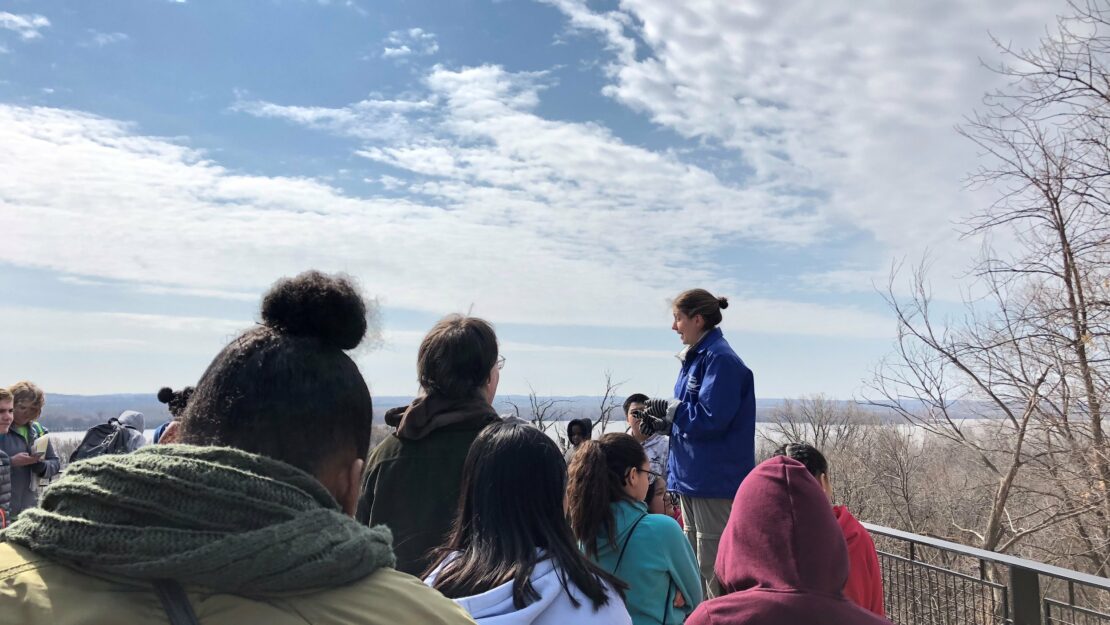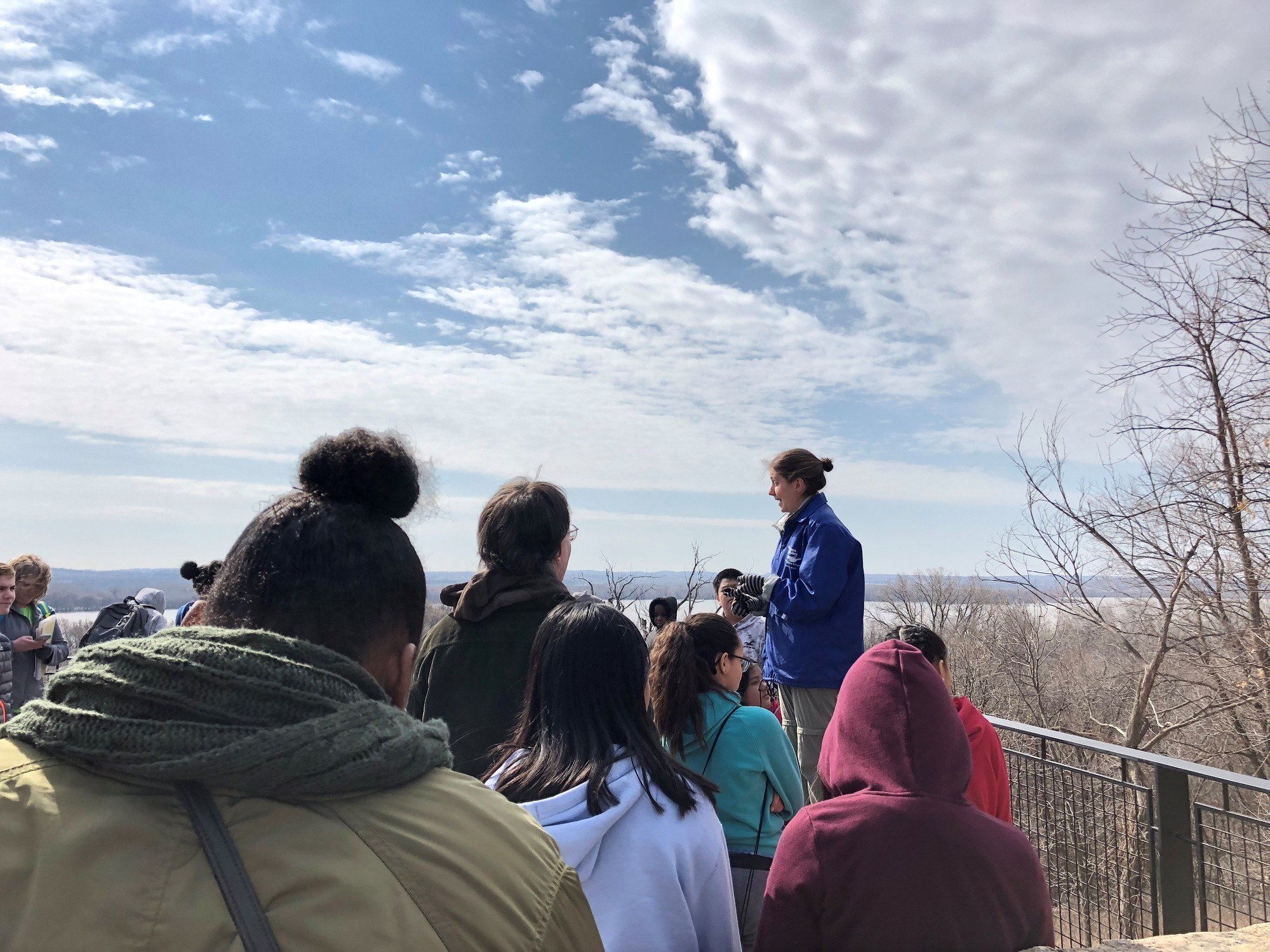One corner of the Corps

by Gina Hatch, visitor services intern/ AmeriCorps member with Minnesota Valley National Wildlife Refuge through Conservation Corps’ Individual Placement program
As part of my work at the refuge, I often get to give short “ranger talks” to drop-in visitors or visiting school groups. Photo by Joel Vos/USFWS.
Well into my second year with the Conservation Corps, I still have yet to don the iconic yellow hard hat or lift a chainsaw, and I probably never will during my term. While many intrepid Corpsmembers get up each morning and suit up in steel-toed boots and neon orange chaps to fight the good fight against buckthorn, or to stay the hand of stream bank erosion, I’m here to speak from a different corner of the Corps’ many programs–a corner that doesn’t involve nearly as much stylish safety equipment, but one that I would argue is every bit as exhilarating.
As an Individual Placement in the Corps, I face frontiers in conservation that are a little more abstract. I serve as a Visitor Services intern at the Minnesota Valley National Wildlife Refuge. Minnesota Valley is one of over 560 refuges in a network that spans the country from Hawaii to Puerto Rico. These refuges are all public land managed by the U.S. Fish and Wildlife Service with a mission of “working with others to conserve, protect, and enhance fish, wildlife, plants, and their habitats for the continuing benefit of the American people.”
The refuge is just perfectly situated where you would last expect it: a hair away from the MSP airport (easily one of the biggest flight hubs in the country) and a stone’s throw from the Mall of America (America’s largest shopping mall, in case anyone missed the memo). The light rail drops me off at the refuge visitor center each morning and from the window next to my desk all day I can watch airplanes taking off at regular intervals. When I venture from my desk down to the visitor area, the most common refrain I hear is, “I had no idea this place was here!” sometimes followed by, “I’ve lived here all my life!” My other favorite exclamation: “I’m waiting for my next flight and just wandered over here; what is this place?!”
These kinds of remarks speak to what I love most about working at Minnesota Valley. And they capture the special importance we hold as an urban wildlife refuge. Beyond biology and land conservation, a lot goes into making this and other refuges valuable, welcoming places for their surrounding communities. Recognizing that the U.S. population is rocketing toward a more urban and more ethnically and racially diverse make-up, the Fish and Wildlife Service recently rolled out a blueprint for connecting to urban audiences nationwide and named Minnesota Valley one of 14 urban priority refuges from which to make these connections. This is roughly where my Corps service comes in.
As a Visitor Services intern, my work can encompass anything that touches the public. I rove our trails and make sure trail kiosks are intact and stocked with brochures. I participate in planning events and large festivals hosted at the refuge or around the metro area. Back at the visitor center, I lead informal interpretive talks for the public, help create interactive displays, and design signs and flyers to publicize our events. Most importantly, I get to do all these things while asking myself how I’m contributing to making the refuge a more welcoming place for more people.
When I first applied to serve with the Conservation Corps, urban environmental outreach was at the top of my mind. Minnesota Valley has been an ideal place for me to learn what environmental outreach means in the 21st Century and to start to understand what pernicious barriers need to be broken down to accomplish it. Are these barriers about as tenacious as buckthorn? I would wager a yes. Are these barriers as important to eradicate for the future of conservation? Most certainly. Do the adversaries of these barriers need hard hats and chainsaws? Well, we already discussed that one.
In blog posts to come, I look forward to sharing details about what the challenges (and rewards) of my service do entail.

The refuge hosts several large festivals throughout the year that can bring hundreds of people through the door. Photo by Gina Hatch/UWFS.